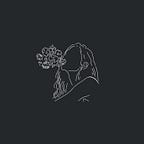Research & Communication Lecture #1
The first lecture of Research & Communication begins in the last week of May. Starting with the question of “What is communication?”, a relaxed learning atmosphere has boosted up in the classroom, also encouraging students to project their thoughts and voices effectively.
First half of the lecture proceeded in a taught class manner, which deeply explained the definition, structure and models of communication, and clarified how different types of models could be applied in the design field. The theory of Two-Way Model Communication inspired me a lot, it brought up an idea of the interaction with the sender and receiver, illustrated how they could respond differently with the same message during the encode/decode process.
For me, this communication model is quite familiar with the user experience metrics that I used in my job routine. Working as a visual designer in an iot company, I often have to participate in product research such as user interview and usability testing, experimenting the interaction between system and user, and facilitate the user input/system output to convert messages clearly.
However, unlike the direct communication method we used in ui/ux design, I think the communication model is more complicated in the branding world. The encoded message transmission could always be affected by external factor and internal factor of noises, which cause a misleading decoded message by the receiver.
During the second part of the lecture, we have been separated into several groups, each group will be taking role as a receiver, and trying to decode the message of a given image in proper perspective. My team received Graphic B(which is a logo element from DXOMark).
While decoding the image, we can not really tell the business nature and do not have a very specific idea of what it is about. The appearance of the graphic shows a meaning of connection, a ring form, a technical icon, it could be related to something about service design, beta app or even internet connection browser. The decoding process was interfered by the visualisation of the image. The geometric graphic shape is in between the border of 2D and 3D form, and the adopted colour are based on the theory or primary colour palette(but in a pinky way).
Therefore we decided to go back to the beginning of the process and tried to decode the image again, thinking that the image may be about a printing company(since the graphic has cyan, magenta, and yellow) or something about a recycle company(each colour represents one item). And suggesting to add a company name/tagline to the logo, or using a logotype instead of an abstract graphic as an avatar.
But after knowing the answer and viewing the full logo of DXOMark, I think the logo is acceptable when the graphic is sitting together with other text form.
The experience inspired me a lot on how to apply the nature of encode & decode process into real life case study. For creating a better practice once more, I want to exploit the design communication process on critiquing one of my previous project — Noritake branding revamp.
I completed this project three years ago during my bachelor study at SCAD. That time in the graphic design — branding class, every student were required to do a brand creation/renovation for a specific company, and I’ve choose Noritake Co., Limited 株式会社 as the topic of my project. Noritake is a tableware and technology company from Japan, which is also an acknowledged leader in tableware manufacturing and marketing with subsidiaries, factories and affiliates worldwide. The idea of the rebranding project is to revamp a visual identity and also to design a set of graphic elements & concepts for corporate swag. In order to drive demand and interest from a high-end audience, the new graphical elements design was adopted with traditional Japanese features, colour and the signature of the flag of Japan — Hinomaru.
This time the encode and decode process will be mainly focusing on the logo part. By decoding the new designed logo of Noritake as an audience, I can immediately imagine this is an Japanese company by the colour of the logo, however, I could not give a specific answer on what is the business nature, I may think this is an accessory brand or a clothing brand that you will found in a traditional Japan department store like Sogo or Apita.
The following graphic asset, patterns and chosen colour have strengthened the “Japanese feeling” of the company, but still, I can not really tell what is the company business and it seems like a design that can be adopted into any Japan based brand. Also there may be some problems while adopting the logo in real life production, the positive & negative spacing of the circle may be affected in prints, the small details of the logo may not be shown up on digital application too.
By improving the performance and reducing the noise, the most appropriate solution will be creating an avatar that represents the brand’s nature + signature product — tableware. I believe that a logotype is necessary now, since Noritake is one of the most popular tableware manufacturer in the world. So if there will be a chance of doing a logo revamp, the best practice will be an avatar with logotype(icon + text).
